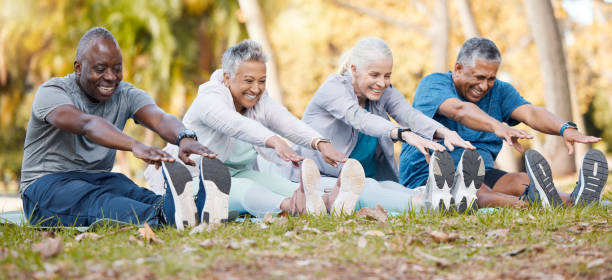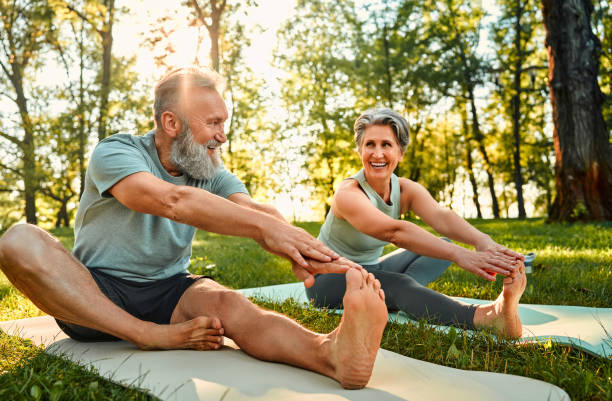Staying active becomes increasingly important for maintaining our health and well-being as we age. However, the needs and capabilities of seniors vary significantly, necessitating personalized exercise programs that cater to individual health conditions, mobility levels, and fitness goals. Senior Fitness is about creating such programs, focusing on enhancing the quality of life through sustainable, safe, and enjoyable physical activities.
By customizing exercise regimens, we can address the unique challenges that come with aging, ensuring that each individual can stay active, reduce the risk of chronic diseases, and maintain independence for as long as possible.
Contents
Key Components of Effective Senior Fitness Programs
To design effective fitness programs for seniors, it is essential to incorporate several key components that ensure these exercises are not only safe but also beneficial and adaptable to their changing needs. These components include a focus on flexibility, strength training, balance exercises, and endurance activities, all of which play a crucial role in older adults’ overall health and mobility.
Personalized Assessments
Before initiating any exercise program, conducting comprehensive assessments of an individual’s current health status, physical capabilities, and fitness goals is crucial. Personalized assessments help design safe exercise plans that align with the senior’s health requirements and lifestyle preferences.
Balanced Exercise Types
An effective senior fitness program should incorporate a variety of exercise types, including cardiovascular training for heart health, strength training to prevent muscle loss, flexibility exercises for enhancing range of motion, and balance activities to reduce the risk of falls. This balanced approach ensures comprehensive health benefits.
Progress Monitoring
Regular monitoring of progress is essential to adjust the exercise program according to the evolving needs and capabilities of the senior. By keeping track of improvements or any difficulties faced, trainers can modify the regimen to keep it effective and enjoyable, fostering a long-term commitment to physical activity.
Ensuring the senior fitness program encompasses these key components can significantly contribute to the success of individual exercise regimens, making it possible for seniors to enjoy a healthier, more active lifestyle.
Implementing Senior Fitness Programs

Creating and implementing senior fitness programs requires thoughtful planning, understanding of individual needs, and commitment to ongoing support. These programs must be tailored to accommodate the varying levels of fitness and health concerns present in the senior population. Below are key aspects to consider for successful implementation.
Customized Program Design
Each senior has unique health considerations, capabilities, and goals. Customized program design involves creating exercise plans that address these individual factors. This customization ensures that seniors can participate safely and are more likely to stay engaged with the program long-term.
Professional Guidance
Professional guidance from trained fitness instructors or physical therapists is crucial for the safety and effectiveness of senior fitness programs. Instructors should have the expertise to adjust exercises to participants’ abilities, provide motivation, and ensure that all activities are performed correctly to prevent injuries.
Accessible and Safe Environments
Ensuring that exercise facilities are accessible and safe for seniors is another key component. This may include providing handrails, non-slip surfaces, adequate lighting, and equipment specifically designed for older adults. Additionally, exercises can be adapted for those with mobility issues or disabilities to participate from home or in community settings.
Social Support and Engagement
Social support is vital for encouraging long-term adherence to fitness programs. Creating a sense of community among participants can increase motivation, enjoyment, and accountability. Group classes, social media groups, or buddy systems are effective ways to foster this supportive network.
Continuous Evaluation and Adaptation
The needs and capabilities of seniors can change over time. Continuous evaluation of participants’ progress and challenges is essential for adapting the program to meet these evolving needs. Regular feedback from participants and health assessments can guide adjustments to the program, ensuring its continued effectiveness and relevance.
Implementing these strategies can help maximize the benefits of senior fitness programs, contributing to improved health outcomes, greater independence, and a higher quality of life for older adults.
Conclusion
Senior fitness is not a one-size-fits-all approach. We can ensure seniors continue leading active and fulfilling lives by customizing exercise programs to address individual needs and incorporating key components such as personalized assessments, balanced exercises, progress monitoring, and ongoing support. With proper planning and implementation, senior fitness programs have the potential to enhance physical, mental, and social well-being, promoting a healthier and happier aging process. It’s always possible to start incorporating physical activity into daily routines and investing in the long-term health of our seniors.
